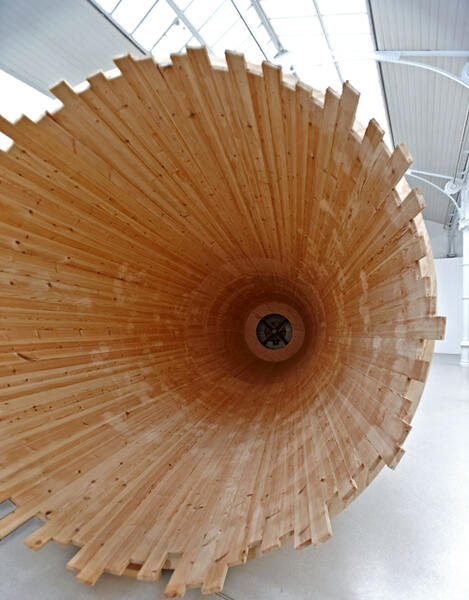Cildo Meireles
Museo Nacional Centro de Arte Reina Sofía, Madrid
It is a well-known fact that conceptual art cannot be understood without resorting to the essential structure it received from the most relevant authors of the revision of modernity carried out in the 1960s in Brazil.

While the Reina Sofía Museum decided to explore this line of thought further through the Lygia Pape retrospective held almost two years ago, it is now the turn of Cildo Meireles (Rio de Janeiro, Brazil, 1948) who, after the retrospective of his works from the period 1967- 2008 organized by the Barcelona MACBA in collaboration with Tate Modern, returns in great style to a Spanish museum.
The venue for this occasion was the Palacio de Velázquez, a space which has often hosted art interventions, perfect for the exhibition of the artist’s most recent works and for showing several of his productions to the public for the first time. Throughout his artistic career, Cildo Meireles has taken the initiative of proposing new languages for conceptualism with the active participation of the viewer. In the tour proposed by the Madrid museum, one may discern this interaction in the more than a hundred works shown here, delving further into the eternal relationship between space and time and sensory perception.
The staging includes the reproduction of some of his most prominent recent proposals, like Abajur, presented in the 2010 Sao Paulo Biennial and shown for the first time in Europe, or Amerikkka, and some up to now unknown pieces such as Pares Impares (Even Odd) or Esfera Invisible (Invisible Sphere). Through the most evident sensory experiences – in addition to the visual one ̶ with the use of works of sound art or those which, unavoidably, appeal to touch as receptor, Meireles’ proposal resorts to geopolitics, the concept of ideology and the economic influence as critical vectors and as the basis for all reinterpretation, confronting the idea of History as discursive thread of colonialism. By the date of publication of this review, the public will be able to visit this exhibition at the Museu de Serralves, in Oporto, Portugal, which has contributed as co-producer.
-
 Detalle de la obra Olvido. 1987-1989
Detalle de la obra Olvido. 1987-1989
Tienda indígena realizada con aproximadamente 6000 billetes de países americanos, 3 toneladas de huesos. 69.300 velas, carbón vegetal y sonido. 400 cm de altura y 840 cm de diámetro
Foto: Joaquin Cortés/Roman Lores. Museo Nacional centro Reina Sofia. Colección del artista
-
 Entrevendo (Entreviendo) 1970/1994
Entrevendo (Entreviendo) 1970/1994
Ventilador con calefactor, túnel de madera, hielo. 300 x 900 cm.
Colección MACBA - Fundación MACBA, Colección Fundación Repsol / Colección del art
Foto: Joaquin Cortes / Roman Lores. Museo Nacional Centro de Arte Reina Sofia






